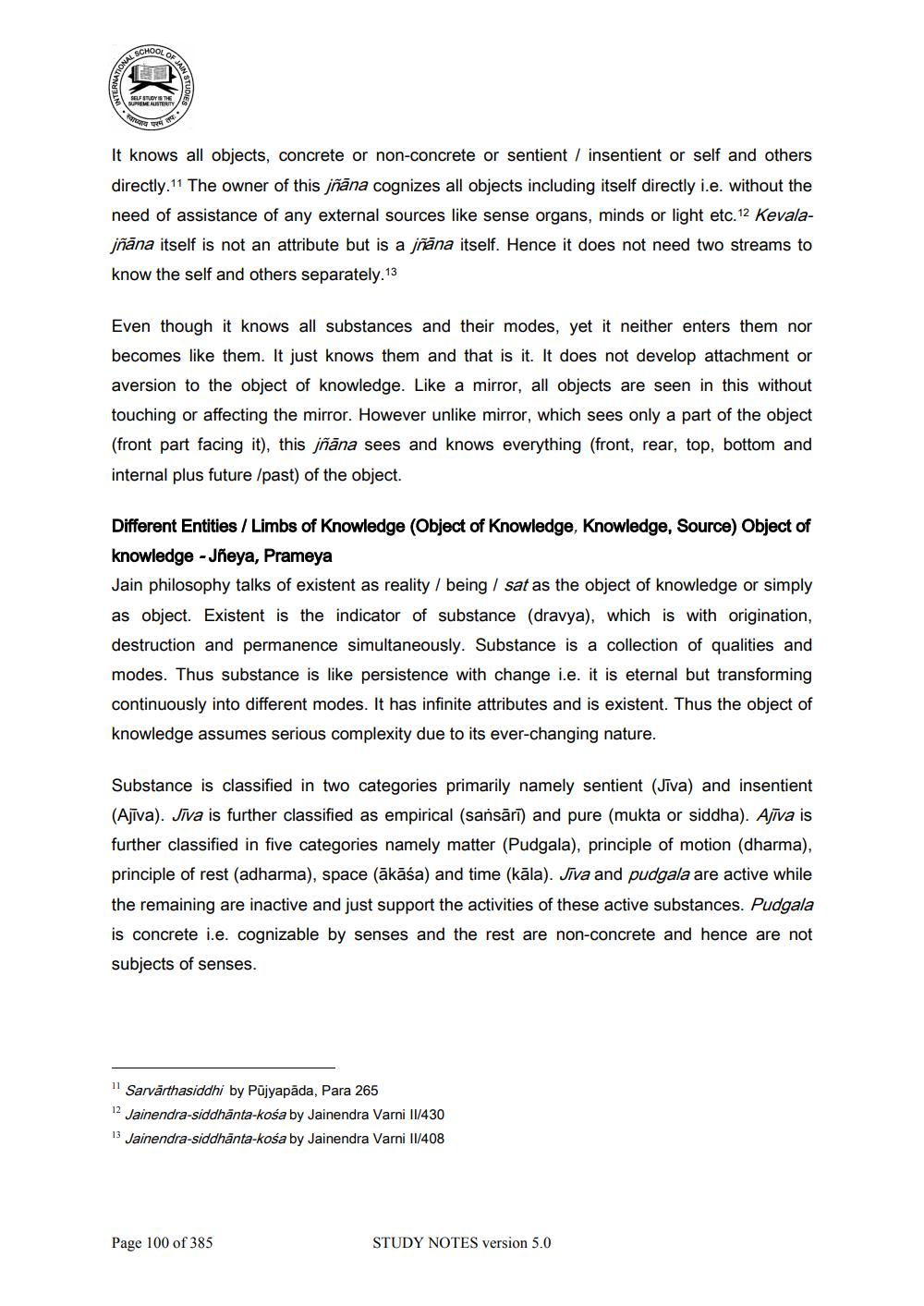________________
SCHOOL OF
TIONAL
JAN STUDIES
SELF STUDY IS THE SUPREME AUSTERITY
ध्याय परम
It knows all objects, concrete or non-concrete or sentient / insentient or self and others directly.11 The owner of this jñāna cognizes all objects including itself directly i.e. without the need of assistance of any external sources like sense organs, minds or light etc. 12 Kevalajñāna itself is not an attribute but is a jñāna itself. Hence it does not need two streams to know the self and others separately.13
Even though it knows all substances and their modes, yet it neither enters them nor becomes like them. It just knows them and that is it. It does not develop attachment or aversion to the object of knowledge. Like a mirror, all objects are seen in this without touching or affecting the mirror. However unlike mirror, which sees only a part of the object (front part facing it), this jñāna sees and knows everything (front, rear, top, bottom and internal plus future /past) of the object.
Different Entities / Limbs of Knowledge (Object of Knowledge, Knowledge, Source) Object of knowledge - Jñeya, Prameya
Jain philosophy talks of existent as reality / being / sat as the object of knowledge or simply as object. Existent is the indicator of substance (dravya), which is with origination, destruction and permanence simultaneously. Substance is a collection of qualities and modes. Thus substance is like persistence with change i.e. it is eternal but transforming continuously into different modes. It has infinite attributes and is existent. Thus the object of knowledge assumes serious complexity due to its ever-changing nature.
Substance is classified in two categories primarily namely sentient (Jīva) and insentient (Ajiva). Jīva is further classified as empirical (sansārī) and pure (mukta or siddha). Ajiva is further classified in five categories namely matter (Pudgala), principle of motion (dharma), principle of rest (adharma), space (ākāśa) and time (kāla). Jiva and pudgala are active while the remaining are inactive and just support the activities of these active substances. Pudgala is concrete i.e. cognizable by senses and the rest are non-concrete and hence are not subjects of senses.
11 Sarvärthasiddhi by Pujyapada, Para 265
12 Jainendra-siddhanta-kosa by Jainendra Varni 11/430
13 Jainendra-siddhanta-kosa by Jainendra Varni II/408
Page 100 of 385
STUDY NOTES version 5.0




